Tram Chim National Park
In addition to the colorful flower village of Sa Dec, lotus-covered rivers, and expansive golden fields, Dong Thap offers even more attractions. Tram Chim National Park, a remarkable biodiversity reserve, provides an invaluable experience for nature enthusiasts.
Established in 1998, Tram Chim serves as a model of inland wetland habitat representative of the Plain of Reeds. Today, it successfully showcases the unique characteristics of the western regions of Vietnam while serving as an irreplaceable habitat for a diverse range of wildlife.
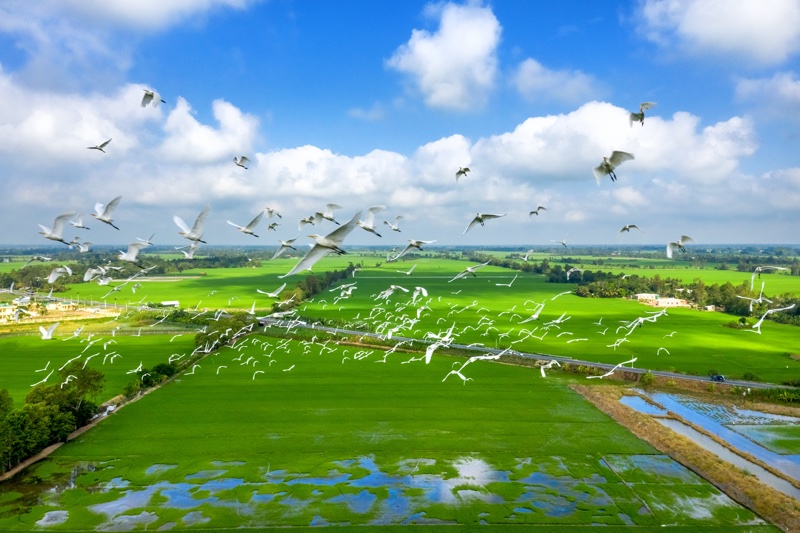 Tram Chim National Park
Tram Chim National Park
Ranked 2000th globally and 4th in Vietnam, this green oasis boasts significant international ecological importance. Blessed with majestic landscapes, clean air, tranquil surroundings, and sacred wildlife, Tram Chim National Park is a must-visit ecotourism highlight.
Location & Terrain
Tram Chim National Park spans seven communes (Tan Cong Sinh, Phu Duc, Phu Tho, Phu Thanh A, Phu Thanh B, Phu Hiep) in Tam Nong District, Dong Thap. The park is set in a remote area approximately 35 km from Cao Lanh City, the provincial capital. It is situated about 20 km north of the Mekong River and around 170 km southeast of Ho Chi Minh City.
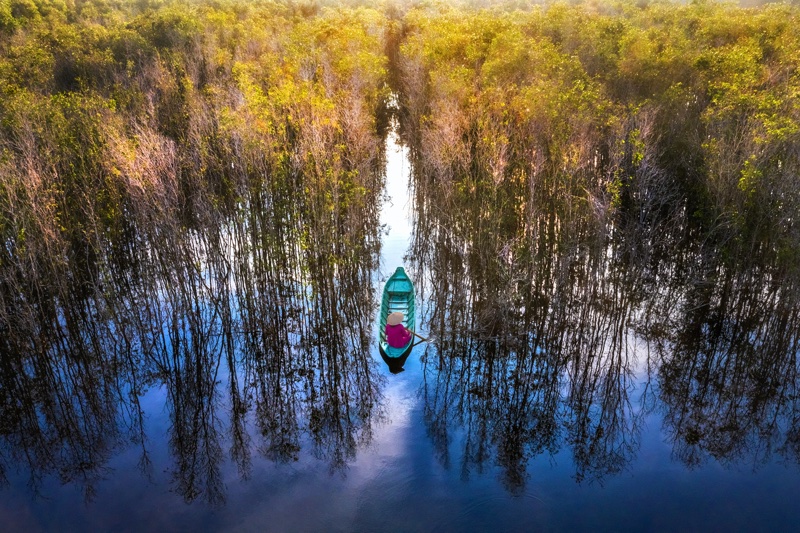 Tram Chim National Park
Tram Chim National Park
The park features a distinctive flat terrain that slopes slightly to the west, traversed by an extensive network of canals. This canal system has reduced the duration of flooding to about six months a year, with the remaining six months being mostly dry and featuring lower water levels. The water table can also be managed through human intervention, allowing for better control of flooding in different zones.
Biodiversity Values
Covering more than 7,500 hectares, the park contains a large mangrove forest that supports a rich diversity of flora and fauna. Tram Chim is home to over 130 plant species, including lotus communities, grasslands, Melaleuca forests, and swamp ecosystems, intricately intertwined. Melaleuca forests dominate the landscape and host the most significant number of wild rice communities (Oryza rufipogon).
The fauna is highlighted by more than 230 bird species from 49 families, accounting for roughly a quarter of all bird species recorded in Vietnam. Notable rare species include the great cormorant, Bengal bustard, white-winged duck, gray-headed pelican, black-backed piping plover, and the spectacular red-headed crane.
Fish species inhabiting the park are also critical for maintaining ecosystem balance and providing food sources for birds. This includes several species listed in Vietnam's Red Book, like clown featherback, hampala barb, and small-scale mud carp.
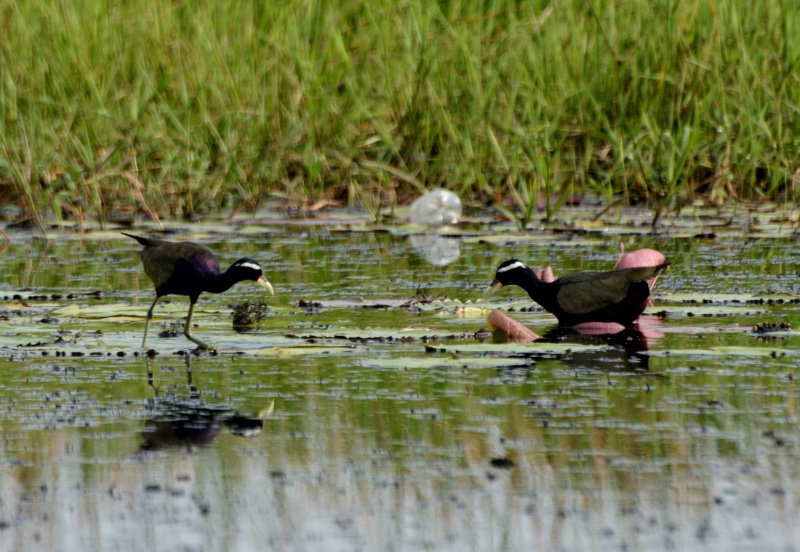 Jacanidae in Tram Chim National Park
Jacanidae in Tram Chim National Park
These invaluable natural resources have drawn attention from scientists and curious visitors alike. Tram Chim National Park has effectively preserved its biodiversity through sustainable practices.
Best Time to Visit
The best time to visit Tram Chim National Park is during the water-rising season, from September to December. This period marks the breeding season for many birds and is considered peak visitation time. The landscape flourishes with lush greenery, blooming flowers, and vibrant flocks of birds. Additionally, numerous engaging activities that showcase the daily lives of local farmers are held at this time.
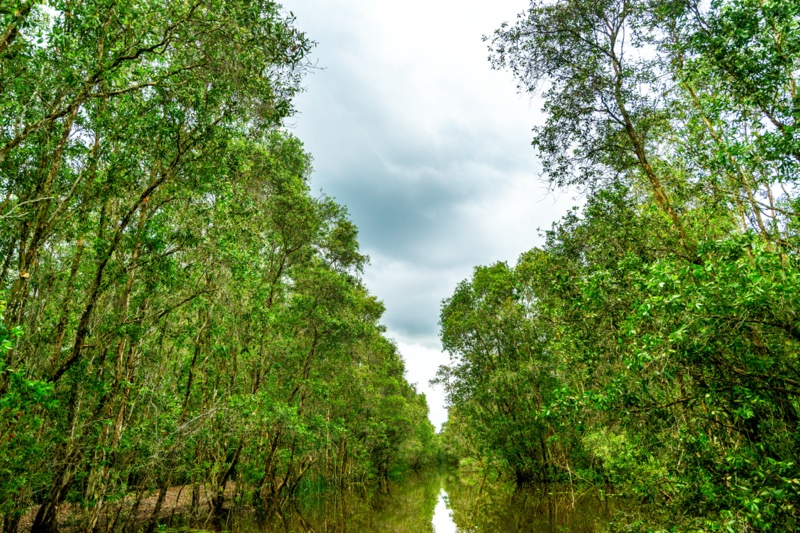 Tram Chim National Park
Tram Chim National Park
For birdwatchers, the dry season from January to June is also a favorable time, as many birds, particularly Sarus cranes, migrate to the area in search of a new habitat.
How to Get There
The route from Ho Chi Minh City to Tram Chim National Park is accessible by both public transport and private vehicles.
By Bus
Several transportation companies, including Hoang Minh and Tan Quoc Minh, provide direct bus services to Tram Chim from Ho Chi Minh City. Buses depart from local bus stations, with ticket prices ranging from 100,000 to 200,000 VND per person.
You can also book a bus to Cao Lanh City and then continue along the Thanh Binh route to reach Tram Chim.
By Car
There are two primary routes: via N2 - 62 National Road or 01 Highway - 62 NR towards Tram Chim. Both routes converge at 844 Provincial Road. After crossing Tram Chim Bridge, the park is located 800 meters to your left. Each route typically takes around 3.5 hours, covering an average distance of 143 km.
Things to Do
Sightseeing by Canoe
A variety of enchanting sights await travelers on a boat trip. You can book a Tac Rang (canoe) or wooden boat—either guided or self-paddled—to navigate through the intricate canal system. This has become a favorite experience offered by the park.
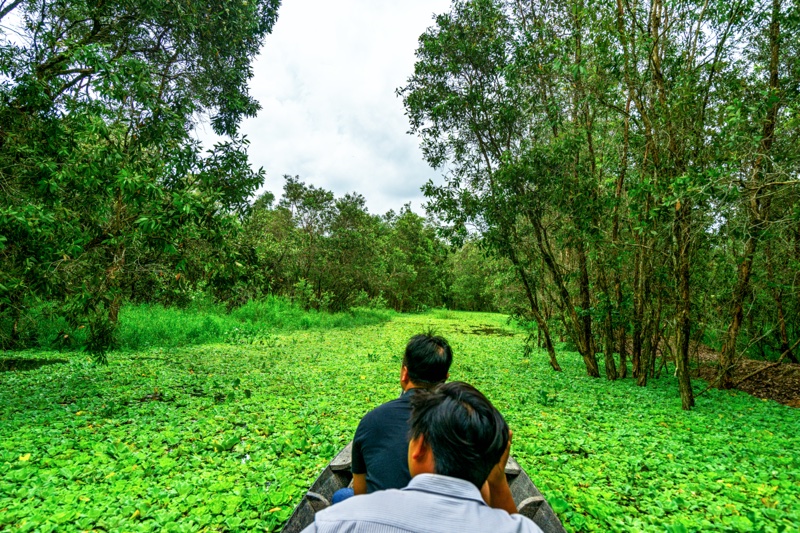 Melaleuca forests in Tram Chim National Park
Melaleuca forests in Tram Chim National Park
The scenery transforms dramatically from moment to moment; one moment, you may find yourself amid towering Melaleuca trees, and the next surrounded by blooming lotus gardens. You can touch the delicate lotus petals and inhale their sweet fragrance along the journey. The golden hues of the sprawling Mimosa pudica may surprise you, while the sound of the motor can startle resting birds into flight. This serene journey promises endless greenery, gentle breezes, and tranquility.
Experience Mekong Life
Immerse yourself in the everyday life of the locals in this submerged landscape through fishing, net casting, using Trum (an eel-catching device), harvesting wild rice, and even hunting for voles—local delicacies. You can also enjoy a refreshing dip in the clear waters surrounded by purple bladderwort flowers.
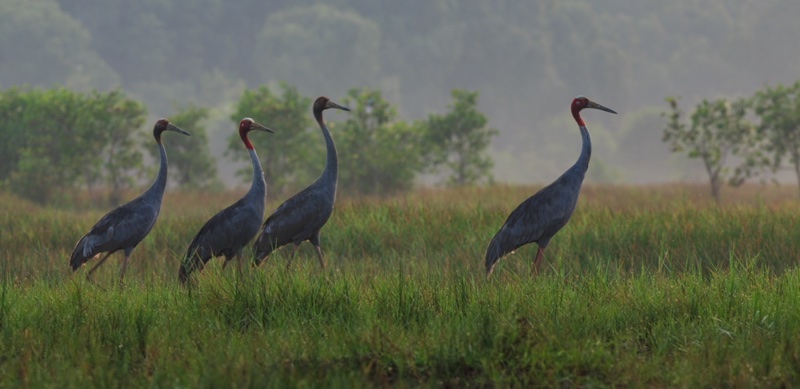 Red-headed crane in Tram Chim National Park
Red-headed crane in Tram Chim National Park
During the flooding season, Sarus cranes are rarely visible, as they prefer the dry conditions. However, during the dry season, visitors can see flocks of these cranes alongside various other bird species, with thousands of storks and rare cranes painting the land with their white and red plumage. The park is a paradise for birdwatchers.
Camping at Dusk
To enhance visitors’ experiences, Tram Chim National Park offers rest cottages and designated camping areas for rent. Even after the sun sets, your exploration of nature doesn't need to end. In the midst of streams and rivers, you can witness a breathtaking evening spectacle. The sun dips below the horizon, casting vibrant reflections on the water surface. If luck is on your side, you may even spot silhouettes of numerous birds flying against the colorful twilight sky.
Dining and Accommodation
After enjoying the enchanting natural surroundings, settle down in a leaf-covered cottage to taste the unique cuisine of Tram Chim. Simple, countryside-inspired dishes such as grilled fish, lotus stewed fish, steamed snails with pepper, fish sauce hotpot, and lemongrass eel are popular offerings. For those wishing to stay within the park, Tram Chim Homestay provides a clean, comfortable, and nature-close experience at reasonable prices, rivaling any city hotel. Remember to book in advance during peak season.
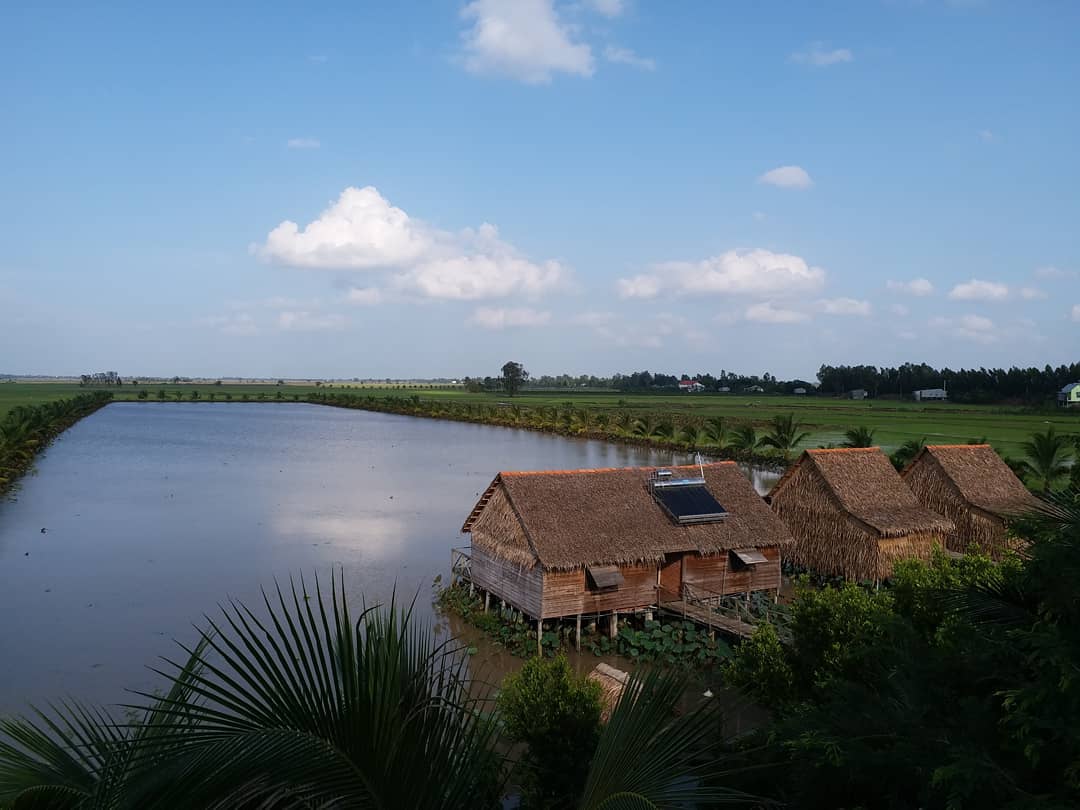 A homestay in Tram Chim National Park - Photo: @lmingchoo
A homestay in Tram Chim National Park - Photo: @lmingchoo
If you prefer a more modern style of accommodation, Cao Lanh City offers several high-quality hotels to choose from. A taxi ride will take about one hour.
Travel Tips
- Due to the wet conditions, be sure to bring along mosquito and insect repellent.
- Wearing earth-toned clothing will help you blend in and not startle birds during your photography.
- Pack snacks and drinks, as exploring Tram Chim can take time. Remember to dispose of any waste in the designated trash bins to protect the environment.
- The park offers different pricing for various activities and services. It's advisable to purchase tickets early during peak season to ensure boat availability.
- 5 AM is the ideal time for witnessing the breathtaking dawn—worth the early rise!
Useful Information
- Location: Tram Chim National Park
- Best for: All visitors
- Entrance: Free
- Hours: Day time visit is recommended
- Distance to city center: 32.1km (19.9 mi)
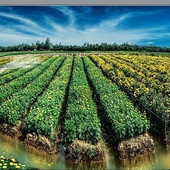
Tan Quy Dong Flower Garden
The Tan Quy Dong Flower Garden is, without a doubt, one of the major attractions of Dong Thap Province.
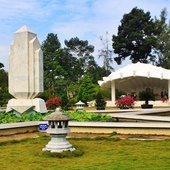
The Revered Nguyen Sinh Sac Historical Site
If you ever do a research about Vietnam, you are most likely to stumble upon the national hero's name, Ho Chi Minh.








